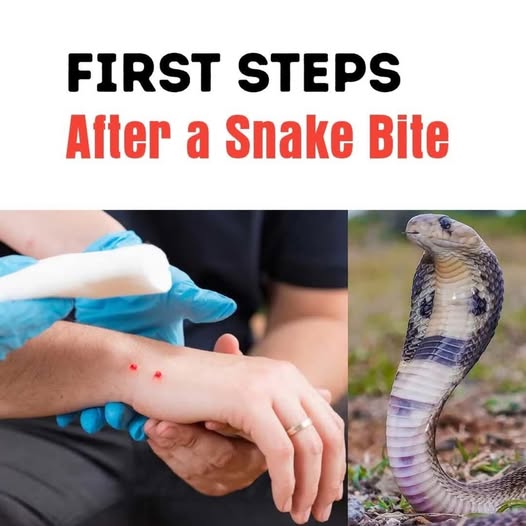Skip to content
You should know this

⚠️ Stay Calm
- Try to remain as calm and still as possible.
- Panic increases your heart rate, which can cause the venom to spread more quickly through your body.
🚶♂️ Limit Movement
- Do not run or walk unnecessarily.
- Stay still and lie down if possible. Keep the affected limb below the level of the heart to slow the spread of venom.
📞 Call for Emergency Help
- Dial emergency services immediately.
- Give them your exact location, description of the snake (if known), and your condition.
⛑️ Remove Tight Items
- Remove any rings, bracelets, watches, or tight clothing near the bite site. The area may swell quickly.
🩹 Immobilize the Limb
- Use a splint or bandage to immobilize the affected area, similar to treating a fracture.
- Avoid compressing the area too tightly—it should restrict movement, not blood flow.
❌ DO NOTs (Very Important)
- ❌ Do NOT suck the venom or make any cuts.
- ❌ Do NOT apply ice or cold packs. It worsens tissue damage.
- ❌ Do NOT apply a tourniquet. It can cut off circulation and cause serious harm.
- ❌ Do NOT drink alcohol or caffeine. These substances speed up the absorption of venom.
- ❌ Do NOT try to catch or kill the snake. Take a photo only if it can be done safely and from a distance.
🧴 Clean the Bite (Only Lightly)
- If possible, clean the bite area gently with soap and water.
- Do not flush heavily or apply any cream or antiseptic. Keep it clean and dry.
👁️ Observe and Record Symptoms
- Note the time of the bite.
- Watch for symptoms such as:
- Swelling, bruising, or discoloration around the bite
- Nausea, dizziness, difficulty breathing
- Changes in vision or speech
- Drooping eyelids or muscle weakness
🏥 While Waiting for Help
- Stay as still and quiet as possible.
- Lay the person down if they feel faint or dizzy.
- Keep them warm with a blanket if needed.
- Reassure the person; reduce anxiety as much as possible.
🧪 At the Hospital
- Medical staff may:
- Administer antivenom (if the snake type is known and venomous)
- Provide IV fluids, pain relief, and monitor vital signs
- Observe for allergic reactions, infection, or organ complications
✅ Extra Tips
- Time is critical. The faster you get medical care, the better the outcome.
- If bitten in a remote area, start moving slowly toward help only if no one else can assist.
- Take a picture of the snake if it can be done safely. Do not go back looking for it.
